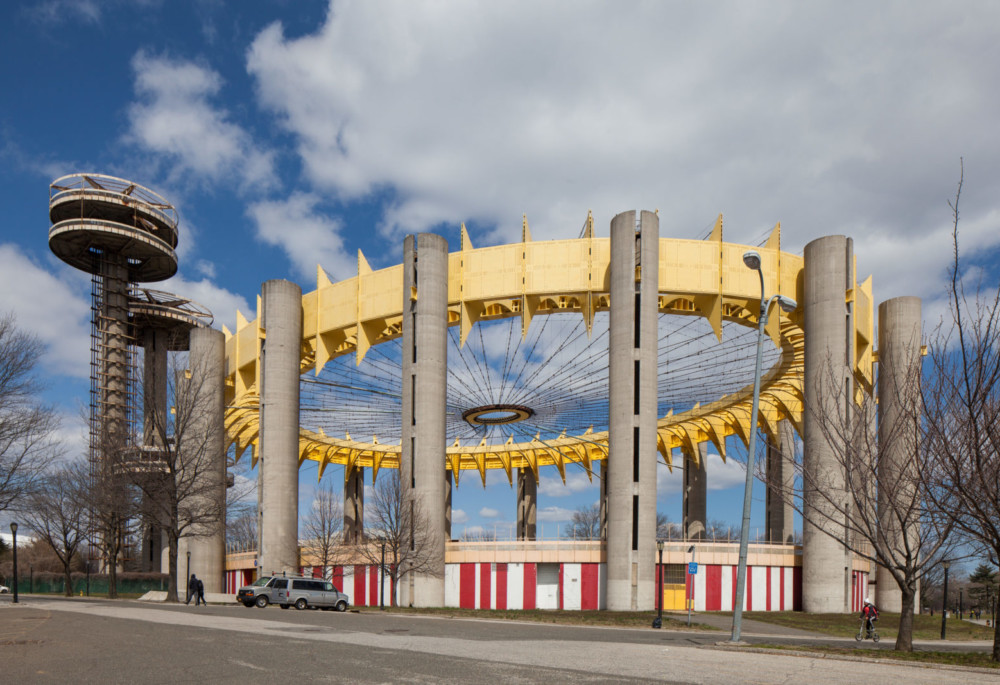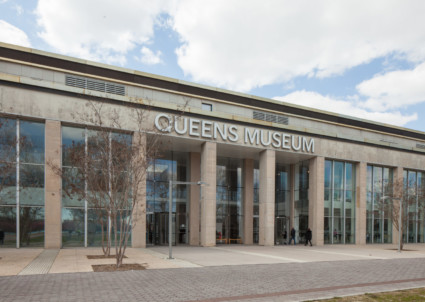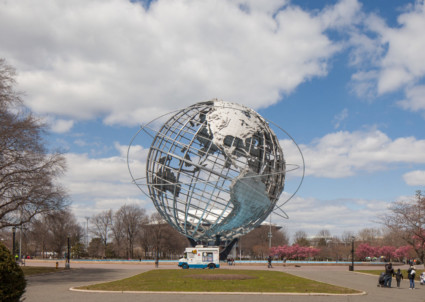Flushing Meadows-Corona Park
New York City Pavilion / Queens Museum, Aymar Embury II, 1939
New York State Pavilion, Philip Johnson and Richard Foster, 1962-64
Unisphere, Gilmore D. Clarke, 1963- 64
World’s Fair Carousel, William Mangels, 1964
The city’s second largest park was originally a meadow and wetland, but in 1907 industrialist Michael Degnon acquired much of the property hoping to woo the federal government to fund a port on Flushing Bay. He began filling it in with residential coal ash through contracts with the NYC Department of Sanitation and the Brooklyn Ash Removal Company. The port plan never materialized and the area remained for several decades the wasteland immortalized as the “valley of ashes” in F. Scott Fitzgerald’s The Great Gatsby (1925). In 1935 the area was officially selected as the location for the 1939 World’s Fair. Landscaping began in 1936 to the designs of Gilmore D. Clarke and Michael Rapuano and the fair opened on April 30, 1939. The only relic surviving in situ from the 1939 fair is the New York City Building, which later hosted the United Nations General Assembly from 1946-50 (while its permanent home was being built in Manhattan), was renovated as the New York City Pavilion for the 1964 World’s Fair and is now the Queens Museum. For the 1964 World’s Fair, Clarke and Rapuano updated their original landscape, whose centerpiece was the Unisphere, a 140-foottall globe set above a giant reflecting pool and fountain. Other extant sites include the New York State Pavilion and the World’s Fair Carousel. The State Pavilion was meant to showcase the state’s cutting-edge art, architecture and technology, and consisted of three components: the open-air Tent of Tomorrow; three Astro-View observation towers; and the Theaterama (now the Queens Theatre in the Park). Long neglected, the Tent has been repainted, while its terrazzo floor—an oversized replica of a Texaco roadmap of New York State—has been mothballed, hopefully awaiting restoration. The carousel combined elements from two previous rides, Feltman’s Carousel (1903) and the Stubbman Carousel (1908), both carved by Marcus Illoins on Coney Island. It was moved to its current location in 1968. Ownership of the site was transferred from the World’s Fair Corporation back to the city in 1967, permanently establishing Flushing Meadows-Corona Park.The Unisphere is an Individual Landmark; the NY State Pavilion and the World's Fair Carousel are listed on the State and National Register of Historic Places.


